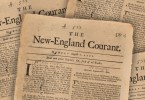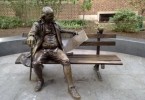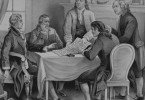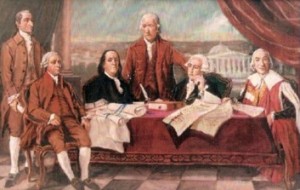
Treaty of Paris was an agreement to end the war between Britain and its American colonies.
The Treaty of Paris was formally signed on September 3rd, 1783 in Paris by representatives of the United States of America and King George III of Britain. It ended the war between America and Britain and recognized American independence and sovereignty.
Talks of peace negotiation began in April 1782 with the American victory at Yorktown, Virginia. This was a decisive and key victory for the Continental Army led by General George Washington and the French Army led by Comte de Rochambeau.
These preliminary negotiations were conducted behind France’s back as America and France had signed The Treaty of Alliance which stated that before either country embarked in any peace negotiations with Britain, they had to reach a mutual agreement. Consequently, America violated that clause of the Alliance and French minister Vergennes had to agree to separate negotiations as long as they were signed on the same day and did not conflict with one another.
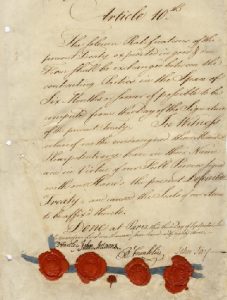
Article 10 of the Treaty of Paris. At the bottom are the signatures of the American representatives and their respective seals.
The preliminary articles of the Treaty of Paris were signed on November 30, 1782. America was represented by John Adams, Benjamin Franklin, John Jay and Henry Laurens. Britain was represented by Richard Oswald and David Hartle. France signed preliminary articles in January 1783.
The final treaty was signed on September 3, 1783 in the Hotel d’York located on 56 Rue Jacob. On the same day France, Spain and Netherlands signed separate agreements with Britain. These separate peace treaties between supporters of America and Great Britain is known as The Peace of Paris.
The American Continental Congress ratified the Treaty on January 14, 1784, France in March 1784 and Britain in April of the same year. The ratified versions were exchanged in Paris on May 12, 1784.
Read The Treaty of Paris transcription
Summary of the articles of the Treaty of Paris
- Britain acknowledged the United States to be free, sovereign and independent states with the British Crown, heirs and successors relinquishing claim to government, property and territorial rights.
- Established geographical boundaries between the United States and British North America.
- Granted fishing rights to United States fishermen in the Grand Banks of the coast of Newfoundland and Gulf of St Lawrence.
- Past debts to be paid by creditors on either side.
- Congress will recommend to states legislatures to recognize ownership of confiscated land and proved restitution.
- United States will prevent future confiscation of loyalist property.
- Prisoners of war are to be released.
- Britain and United States to be given perpetual access to the Mississippi River.
- Territories captured by America after the treaty will be returned with out compensation.
- Ratification is to occur within 6 months from its signing.



